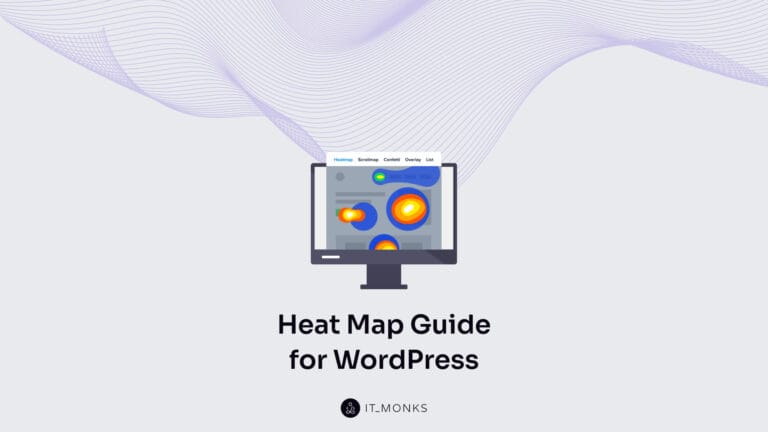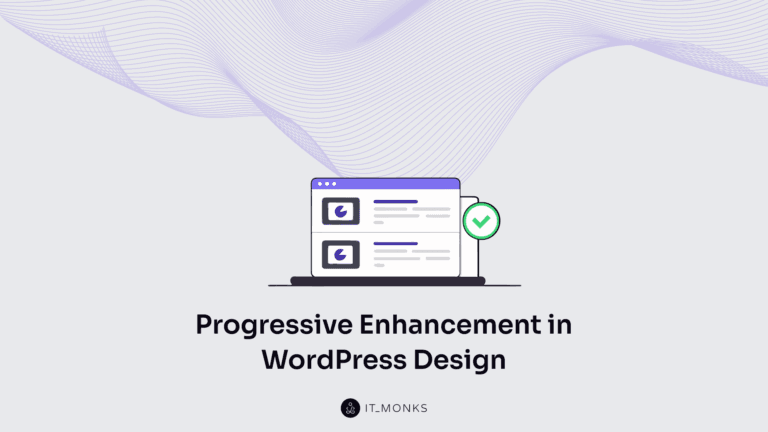How to Build a Successful Ecommerce Website
Table of Contents

Ecommerce is the activity of buying and selling online, which lures millions of users worldwide. Relying on the latest stats shared by Forbes, the global ecommerce market will total $6.3 trillion in 2024. Statista supports this tendency and anticipates that 43% of customers will use the Internet and social media before purchasing. There is no doubt that ecommerce is the future of retail. If you are running a business and want to reach a wider audience and boost brand recognition, learning how to build a successful ecommerce website is essential. This guide discusses all the steps included in the ecommerce website creation. Let’s dive in!
Benefits of Ecommerce
Before we discuss how to build an ecommerce website, let’s consider the main benefits of getting your business online and selling from your website.
- Expanded reach. Selling online allows you to reach out to customers in different geographical locations, not strictly in your city or country. Ecommerce lets businesses expand the customer base beyond what a retail store can offer.
- Increased brand recognition. By making their businesses available online, companies can use marketing strategies to promote their brands and gain increased recognition.
- Improved shopping experience. Customers can enjoy a quicker, more efficient, and streamlined buying experience while searching for the needed offers and browsing your online store’s categories.
- 24/7 availability. Online stores can process orders without any time restrictions, allowing businesses to sell and make money 24/7.
- Scalability. Your online store will grow with your business, adapting to an increased product range in the inventory without needing a physical expansion.
- Resilience. The global pandemic has taught us one crucial lesson – you must be prepared for the most unexpected situations. Running a business offline and online can provide your brand with resilience, letting you operate even when the physical store closes.
TOP 5 Things to Consider Before Creating Your Ecommerce Website

Unlike running a blog or business website, when creating an online store, you should be ready to invest considerable time and effort to keep your ecommerce project fully-featured, competitive, and usable. Many things should be taken into account when bringing such websites to life. Moreover, we recommend that you double-check everything before making the final choice. Stay focused on the following vital elements of your ecommerce store before deciding on the platform it will be built on, web hosting, theme, etc.
1. Flexibility
This is one of the fundamental requirements for ecommerce websites. Your online store should be flexible and adaptive, ensuring that you can adjust the design and features according to your business requirements, adding or removing specific elements as your business grows. A flexible ecommerce website should allow you to add and remove items, adjust prices, manage menus differently, etc.
2. Scalability
Just like making your ecommerce website flexible, you need to ensure it’s scalable enough to grow and modify with your brand. When you set up an ecommerce website, it may bring you about 100 sales per month. However, as your business grows and becomes more recognizable, you should be ready to process 1000 orders or more. A scalable ecommerce website will give you the needed space for development, being ready to grow for your brand’s success.
3. Trustworthy Software
Trust is one of the major factors in ecommerce. More importantly, you should be confident your online store uses reliable and trustworthy software that won’t stop working in a few years. Choosing an ecommerce platform, hosting service, and other components that will help you launch and grow a high-quality website is critical.
History has shown many cases when a wrong choice of software has brought crashes and other issues for ecommerce brands. Some of the most notable examples include Miva Merchant 4, AgoraCart, and Yahoo! Store, which discontinued their services, leaving users in a lurch. To avoid this, you’d better rely on well-established platforms like WooCommerce, which have a strong track record and are likely to be around for the long haul.
4. Security
Security is vital in ecommerce. How can you improve WordPress ecommerce security? Some vital security measures for your online store include an SSL certificate for secure transactions, two-factor authentication for user accounts, running regular security audits, website backups, and relying on professional ecommerce website maintenance services to detect and fix potential vulnerabilities.
5. SEO/User Friendliness
Search engine optimization and user-friendliness are the keys to launching a successful ecommerce website. An SEO-friendly website makes your online store more findable in search engines. Keeping it user-friendly ensures you deliver your customers a pleasant online shopping experience. Ecommerce user-friendliness means your online store features a clean design, clear product descriptions, intuitive navigation patterns, and a simple checkout process. Focusing on your SEO steps for WordPress and user-friendliness, you can create and run an ecommerce website that brings you high traffic, higher conversion rates, and better recognition.
Step-by-Step Guide to Building an Ecommerce Website

Building an ecommerce website is a multifaceted process that includes multiple steps and tasks to create a fully functional and conversion-oriented web store. Our guide outlines the fundamental steps of ecommerce website building. Consider it a checklist of the most important procedures you should complete to build a successful ecommerce website.
1. Choosing the Right Ecommerce Platform
When you create an ecommerce website, your first step is choosing the right platform that features or supports the essential elements and fits the size of your project. There are two main types of ecommerce platforms: SaaS and development platforms. Let’s examine each, outline the major pros and cons, and consider examples of the most popular solutions for each type.
SaaS (Software as a Service)
SaaS ecommerce platforms are among the most popular solutions for building online stores. Whether you are new to the ecommerce topic or already have specific knowledge, you should have heard about Shopify, BigCommerce, and Squarespace Commerce, generally considered the most popular examples of SaaS platforms. Software as a Service commonly includes a predeveloped structure for building your online store.
Pros:
- Easy setup;
- Commonly includes hosting and security features;
- Oftentimes, it contains such pre-built functionality as payment gateways and inventory management;
- Provides regular updates and customer support.
Cons:
- Unlike development platforms, SaaS offers limited customization options;
- You may come across the need to pay monthly fees;
- You get less control over the code compared to using development platforms.
Development Platforms
If you are looking for solutions with more flexibility and customization options, consider opting for development platforms. Unlike SaaS, these require more technical expertise. If you choose a development platform to create an ecommerce website, you’d better rely on expert help from agencies like IT Monks. Speaking about examples of development platforms, we won’t make a mistake if we highlight WordPress.
Development platforms are divided into several major types, outlined below. Let’s review them and discuss the pros and cons of each.
Custom Ecommerce Development
With custom ecommerce development, you get an online store built to match your brand’s needs and requirements. It features a versatile design and functionality built from scratch to meet your demands fully. This is the best choice for businesses with unique demands that pre-designed solutions cannot handle.
Pros:
- Unique design and functionality;
- Scalable website that modifies while your business grows;
- The possibility of integrating with any third-party services or APIs.
Cons:
- Higher cost and longer development time than SaaS;
- You need specific knowledge or more experienced developers to create your ecommerce website;
- As a website owner, you are responsible for updates and maintenance.
Headless Ecommerce
Headless ecommerce is the best choice for businesses requiring customized front-end experiences or leveraging the latest web development technologies. In headless ecommerce, the front end (user interface) is separated from the back end (ecommerce functionality), allowing businesses more control over their website design and user experience.
Pros:
- Flexibility and scalability;
- Keeping frontend and backend separate;
- Ease of implementation of new technologies and frameworks.
Cons:
- You need to work with developers familiar with the headless structure;
- If you are not experienced enough, you may face complexities in handling frontend and backend by yourself;
- Higher cost.
Ecommerce Template
Ready-made ecommerce templates are the best choice for small and medium-sized businesses looking for a budget-friendly solution to make an ecommerce website. Ecommerce templates are ready-to-go web design solutions, which include pages, layouts, and functionality that will be useful for launching niche-specific projects. If you wonder how to choose a WooCommerce theme, consider the following pros and cons.
Pros:
- Cost-effectiveness;
- Quicker and easier setup;
- You do not need advanced coding skills to work with ecommerce templates.
Cons:
- Limited scalability and flexibility;
- A template-based website faces the risk that it won’t feature a versatile design;
- It may not fully meet business needs.
When choosing the best ecommerce platform to make an ecommerce website, consider the following recommendations to make the right choice:
- SaaS platforms should be the best fit if you prioritize ease of use and quick setup.
- Custom development will be your best choice if you seek extensive control and customization opportunities.
- Templates should be your optimal choice to achieve a budget-friendly solution that you can modify code-free.
2. Website Hosting
Selecting hosting should be your next step after choosing an ecommerce platform for your business. There are different types of hosting available, each serving a specific goal. To help you with your decision-making, let’s overview the major types of hosting and give some suggestions on which of them should be the best fit for your ecommerce business.
- Shared hosting suggests that multiple websites share the same hosting resources. It’s the most affordable solution, mainly used by small businesses that do not receive much traffic.
- VPS (Virtual Private Server) hosting provides websites with dedicated resources within a shared server environment. It’s a better choice for small — to medium-sized websites with a moderate traffic flow.
- Dedicated server hosting provides businesses an entire physical server specifically for their projects. It should be a better choice for large ecommerce websites.
- Cloud hosting offers scalability and flexibility by utilizing multiple interconnected servers. It should be an optimal choice for rapidly growing websites.
- Managed WordPress hosting is intended explicitly for WordPress websites. It commonly offers security features, specialized support, and automated updates.
3. Domain Name Selection
WordPress domain name selection is a crucial step in building an ecommerce website. The importance of choosing a memorable domain name shouldn’t be underestimated. Following the common rules of domain name selection, you can make your brand stick to users’ memories and stand out from the competition.
- Keep it short and simple, aiming for a maximum of two or three words.
- Make it brandable. The domain name should reflect your brand. Never use words that could associate your website with competitors.
- Use keywords associated with your brand.
- Avoid using special characters, hyphens, numbers, etc. It can confuse users and make your domain harder to remember.
- Choose a domain name that is not too narrow and ready to expand as your business grows.
- Ensure your domain name is easy to pronounce and understand.
4. Choosing Ecommerce Website Builder
Website builders are online platforms or tools that enable you to create and customize websites without writing code. They are the best choice for businesses looking for quick, cost-effective solutions to launch their projects online. Website builders generally feature the drag-and-drop functionality, ready-made templates, and base functional elements needed for a quick start for your website.
The three common types of website builders include:
- WooCommerce. This powerful ecommerce plugin for WordPress lets you easily launch a fully functional web store. Benefits of WooComerce include extensive customization features and flexibility, as well as many plugins and gateway options and marketing tools. It provides ultimate scalability, allowing you to customize an ecommerce website to your needs. In most cases, you do not need advanced coding skills to work with WooCommerce.
- Shopify. This hosting ecommerce platform requires technical and coding skills to create a web store. You get web hosting, security features, and payment processing functionality by choosing Shopify. This all-in-one ecommerce solution provides your brand with everything needed to launch a web store hassle-free.
- Magento. The open-source ecommerce platform should be a better choice for larger businesses. Magento is a highly customizable ecommerce solution offering advanced scalability to handle high traffic volumes, which is the preferred choice for large-scale projects.
All of these platforms are popular among ecommerce businesses. If you wonder which of them are our top recommendations, we would advise you to use WooCommerce for several reasons:
- It seamlessly integrates with WordPress and offers advanced customization options of the world’s leading CMS.
- WooCommerce boasts an impressive plugin ecosystem. You can find an extension literally for every purpose.
- WooCommerce is a cost-effective solution. It’s open source and free to use, and you only pay for extensions and themes if needed.
5. Finding a Developer
It may seem like you can launch an online store by yourself. However, there are plenty of nuances and special considerations that should be taken into account when launching a competitive and recognizable ecommerce website. To achieve the best results with your website from its launch, we recommend relying on the professional help of web developers or web design agencies.
Consider how to find the right developer for your ecommerce website.
- Before starting your search, clearly define your requirements, including budget, timeline, project specifications, and desired features.
- Carefully review the portfolios of candidates. Pay special attention to projects with similar descriptions and scopes.
- Do not neglect reading reviews. They will help you better understand the developer’s qualifications and reliability.
- Once you find a good candidate, clearly communicate your expectations and deadlines to ensure you are on the same ground.
At IT Monks, you can find a team of highly qualified WooCommerce developers who have been building WordPress and WooCommerce websites for over 15 years. We know all the pitfalls of the process and ensure your website will be safe and sound when it launches. Besides building your ecommerce website from scratch, we offer exceptional audit and maintenance services, ensuring your website always remains competitive and noticeable.
6. Selecting Templates and Themes
Ready-made website templates are ready-to-go solutions feature design and functionality that you can customize to fit your brand. As a rule, you do not need design or coding skills to work with pre-designed templates.
If you prefer launching your ecommerce website with a theme, pay attention to the following considerations when selecting a ready-made solution for your project:
- Ensure it features smooth navigation patterns. Whatever you do on your website, focus on delivering an excellent customer experience to your audience. If a user finds it difficult to find the needed information, they will likely leave your website and shop elsewhere. To avoid this, select an easy-to-navigate theme.
- Pick a theme with a homepage that reflects your brand. When selecting a template, consider the layout structure, slideshows, and image positioning. The homepage should leave space for you to present your brand so that your customers will understand your business at first glance.
- Mind customization options. Whatever template you choose, you must adjust to meet your business needs. Before deciding on the best theme for your brand, check what customization options it includes and supports. Does it allow you to embed social media options? How easy is it to modify your website’s content? If you decide to work with a drag-and-drop builder, ensure the chosen template can integrate with one.
7. Adding Products and Product Pages
Your ecommerce website is all about the products and services you want to sell to your audience. A well-thought-out showcase of your products and product pages is one of the keys to success. Take your time to think about how to present your products in the best way possible. Mind the following guidelines to achieve a remarkable product showcase on your website:
- Work on product descriptions. Ensure the descriptions clearly explain your products, to whom they will most appeal, what issues they solve (if any), and when and how they can be used. Also, ensure that the descriptions are optimized for SEO. Opt for short sentences and avoid using complex phrasing.
- Use high-quality product images that make your offers stand out. Visuals speak louder than words, and we all know that. While working on product pages, devote enough time and attention to product images. Ensure visuals look good on all devices and screen types. Add product variation images to present all aspects of your deals.
- Mind adding products to categories. It will help you improve navigation patterns on your website and help users quickly find the items they are looking for. Product categories can also help your customers sort through specific items and find the deals within their preferred price range.
8. Setting Up Payment Methods
Once you set up product details, integrate your website with payment methods. Different people have different preferences for paying online. Setting up payment methods goes hand in hand with conducting audience research. Once you know your customer’s preferences, you can set up payment methods accordingly.
Generally speaking, there are three main types of ecommerce payment gateways:
- Redirects (like PayPal) take users to a separate page to process a payment. It is one of the most straightforward solutions for retailers.
- On-site checkout and off-site payment (like Stripe). As the name suggests, this payment method hosts the front-end of payment, including data for payment processing, but processes the payment off-site.
- On-site payment. This payment method is the best choice for companies with complete control over their payment processing. It’s also the best choice for large corporations that can guarantee its security and afford to keep it working smoothly on their websites.
9. Configuring Shipping Settings
If your ecommerce company sells physical products, you must manage shipping settings on your website. Customers should be free to choose from several shipping options, such as payment methods. Thus, when working on the shipping configuration on your website, keep the following recommendations in mind.
- Clearly and transparently outline your company’s shipping policy on your website. Do you offer free shipping or deliver orders at a variable fee? What shipping companies do you work with? Do you ship internationally? Describing such information on your website should help avoid customers’ frustration at checkout.
- Decide if your company will do the packing or drop shipping. You can automate the process using shipping software that seamlessly integrates with your workflow.
10. Previewing and Publishing the Online Store
Here comes the final step you need to take when you build an ecommerce website. Thoroughly testing and reviewing your website before it launches in public are vital steps that ensure a seamless user experience. Before hitting the publish button, make certain that you’ve completed all steps from the following checklist:
- Does your store look good on mobile?
- How fast and well does it run in different browsers?
- Do the search, filters, and categories work well?
- Are all the features and functions of your website working?
- Can you process the payment?
- Can you switch between currencies, languages, and time zones?
Conclusion
Building an ecommerce website involves many steps and tasks, most requiring technical expertise for a smooth and correct setup. Our guide has outlined the fundamental steps involved in an ecommerce website launch. However, every project is unique, and building your online store may require additional steps and integrations.
We recommend working with professional developers to ensure you build an ecommerce website that performs to its fullest potential and doesn’t miss any vital element. At IT Monks, we’ve created outstanding websites for multiple businesses and projects for over 15 years. We know how to develop an ecommerce website that is remarkable and competitive. Relying on us, you get a full suite of services oriented to plan, set up, develop, customize, promote, and secure your website. Do you feel it’s time to make your online store look and feel outstanding? Contact us to discuss your project today!
FAQ
- Can I build an ecommerce website on my own?
You can build your ecommerce website by yourself, especially if you use page builders. However, you may need qualified technical help to implement advanced settings and customizations. This is when the IT Monks team can help you.
- How much does it cost to build a full ecommerce website?
The cost of an e-commerce website launch varies depending on your project’s complexity, design, functionality, customization needs, and whether you build a DIY store or rely on page builders. The cost may be $20,000 for development, design, hosting, and maintenance ($10,000 for a theme-based solution).
- Can I make an ecommerce website for free?
Creating an online store for free is possible, but opting for this way is not recommended. Free website builders and open-source platforms let you create ecommerce websites at no cost. However, this way, you may encounter limitations regarding features, branding, and customization options. We recommend opting for premium solutions when launching your ecommerce site. Paying for professional development services will pay off manifolds when you publish them.
- How to build an ecommerce website?
The steps of building a web store vary depending on each project’s specifications. Building an ecommerce website typically involves the following steps:rnu003culu003ern tu003cliu003eChoose an ecommerce platform;u003c/liu003ern tu003cliu003eSelect website hosting;u003c/liu003ern tu003cliu003eDecide on the domain name;u003c/liu003ern tu003cliu003ePick a website builder;u003c/liu003ern tu003cliu003eFind a developer;u003c/liu003ern tu003cliu003eSelect ecommerce templates;u003c/liu003ern tu003cliu003eAdd products to the store;u003c/liu003ern tu003cliu003eSet up payment methods;u003c/liu003ern tu003cliu003eConfigure shipping options;u003c/liu003ern tu003cliu003eDo a final review and launch.u003c/liu003ernu003c/ulu003e
Contact
Don't like forms?
Shoot us an email at [email protected]
Send a Project Brief
You need to load content from reCAPTCHA to submit the form. Please note that doing so will share data with third-party providers.
More InformationYou are currently viewing a placeholder content from Turnstile. To access the actual content, click the button below. Please note that doing so will share data with third-party providers.
More InformationYou are currently viewing a placeholder content from Facebook. To access the actual content, click the button below. Please note that doing so will share data with third-party providers.
More InformationYou are currently viewing a placeholder content from Instagram. To access the actual content, click the button below. Please note that doing so will share data with third-party providers.
More InformationYou are currently viewing a placeholder content from X. To access the actual content, click the button below. Please note that doing so will share data with third-party providers.
More Information



